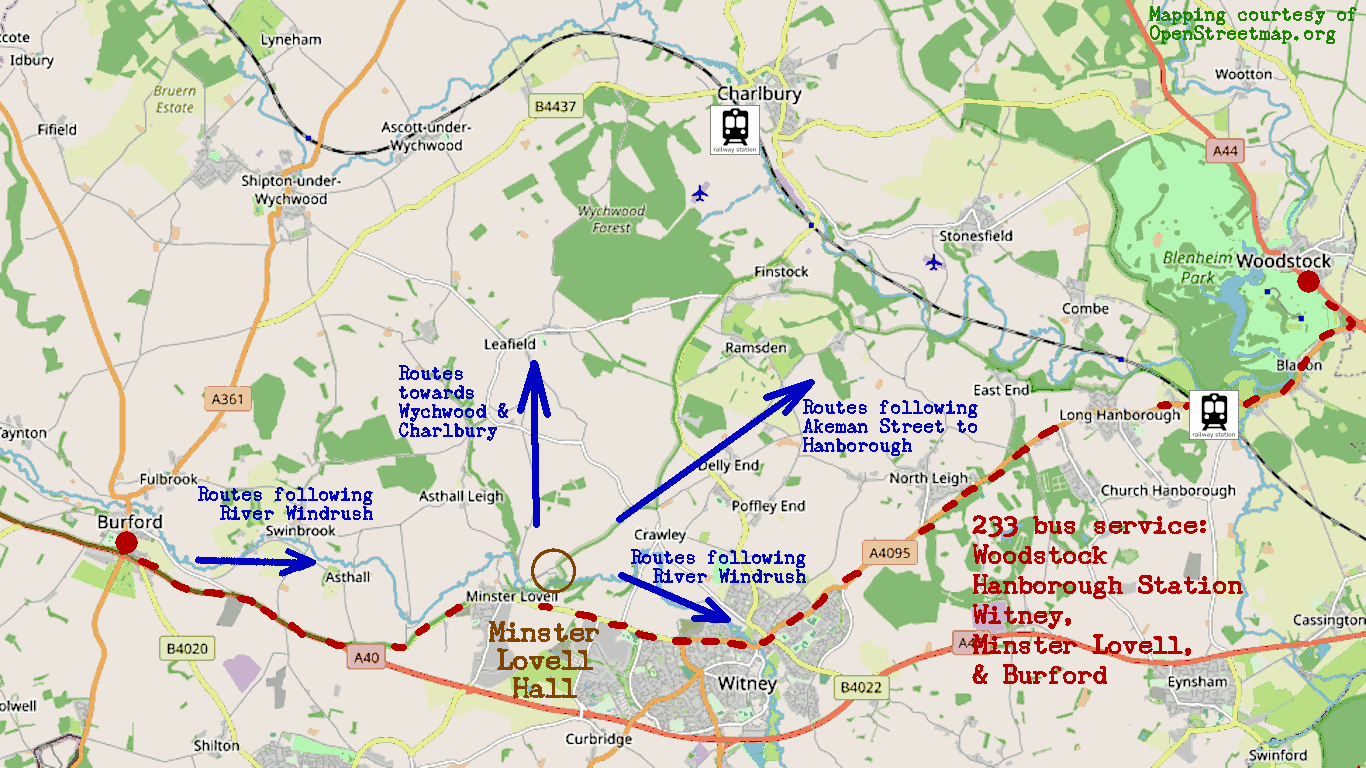


Minster Lovell Hall has a surreal quality; especially if the weather adds to the atmosphere. It’s a classic ‘ruin’, but at the same time you can see that centuries of less reverent visitors have scrawled graffiti over many parts of it (a practise common before modern times). And while today it seems a backwater, the history of the site ties it to some major events in history.
 © 2022 Paul Mobbs; released under the Creative Commons license.
© 2022 Paul Mobbs; released under the Creative Commons license.
Post created: 17th April 2022.
Length: ~1,150 words.
More then anything, it’s just an ethereally beautiful place to visit. From my own experience, though, you can easily lose yourself for an hour or more exploring the nooks and crannies of this ancient building.
Location: Minster Lovell, Oxfordshire
Type: ‘Medieval Sites’.
Condition: Well preserved ruin of a Medieval manor.
Access: Open to public free of charge. Cars cannot drive up to it, but accessible on foot by road or across fields.
OS Grid Ref.: SP324113
Further information: English Heritage.
Walks posts or videos for this site:
Minster Lovell is probably one of the most south-westerly places I regularly travel to from Banbury; taking the 233 bus from Hanborough station, and then walking back to the one of the stations on the Cotswold Line to catch the train home again (note that Coombe, Finstock, Ascott & Shipton stations are effectively closed right now – but Hanborough, Charlbury, and even Kingham are easily walkable from here cross country).


The 233 bus service not only gives access to Minster Lovell direct from Hanborough railway station (journey time approximately half-an-hour), but from Minster Lovell it is possible to take-in the landscape that sits between the Windrush and Evenlode valley – including Wychwood Forest.
If you take the bus to Burford or Witney there are inevitable busy roads to tackle before you get out into the countryside. From here, though, you’re already in the countryside, and the quiet lanes and bridleways will take you north & west into the Evelode Valley and Wychwood. Given the problems of getting out of Burford, this is also a better location to pick-up the course of Akeman Street, which runs around the north side of the parish.

The parish of ‘Minster’ (it’s original name before the Lovell family took possession of it) is ancient – with history stretching back to the Stone Age. The modern A40 is the course of an ancient ridge route, and the river valley itself has been a place of settlement for millennia.
The hall was probably a significant farmstead by the time of the Doomsday Book. From then it passed from one baron to another until the Lovell family took-up residence around the 13th Century. The 7th Baron William Lovell built largest parts of the foundations and walls of the present hall around 1431-1440.

Unfortunately for the family, the next generation chose to support the losing side in the Wars of the Roses, and after 1485 the property was seized by the Crown. Thereafter it was used by members of the Tudor’s extended family.
At the beginning of the 17th Century it passed to the Coke family, who occupied it until their wealth and power outgrew this quiet corner of Oxfordshire in the mid-18th Century – and they moved to Norfolk.
It was at this point the core of the building was ripped-out for its valuable stone, leaving the the shell much as it is today.
As Romanticism influenced culture at the beginning of the 19th Century, the hall became a place of pilgrimage for the new ‘culture tourists’ of modern England – and, as was common in these times, they would scratch their names into the walls to mark their presence. In fact, it’s only relatively recently that doing that has been frowned upon.

I find the graffiti rather strange. Much of it is dated from the 19th to early 20th Century. At one level it detracts from the building; but at another, it speaks the rampant individualism which grew out of the Romanticism movement, where people sought not only to experience but also to ‘possess’ places like this by scrawling their names on it (though admittedly, today we have the ‘virtual walls’ of social media for people to do that). Personally, I’m more than happy to pass through here, just taking a break on my travels, and ‘leaving no trace’ that I was ever here.
More than anything, as in the tale of that other figure of Romanticism, ‘Ozymandias’, for me this is somewhere to come and peacefully contemplate the impermanence of human society, versus the enduring power of nature – which slowly and certainly is taking back the site as the structure ever-so-slowly decays, as the river ever-so-gently incessantly flows by. On a bright Autumn day (when the pictures for this page were taken), or in the fog (oh! I wish I had a camera then!), it’s a lovely place to sit and contemplate our ‘place in time’.